
Papatoetoe is a former New Zealand parliamentary electorate, and is part of greater Auckland.

Papatoetoe is a former New Zealand parliamentary electorate, and is part of greater Auckland.
The 1977 electoral redistribution, initiated by Robert Muldoon's National Government, was the most overtly political since the Representation Commission had been established in 1886 through an amendment to the Representation Act. [1] As part of the 1976 census, a large number of people failed to fill out an electoral re-registration card, and census staff had not been given the authority to insist on the card being completed. This had little practical effect for people on the general roll, but it transferred Māori to the general roll if the card was not handed in. Together with a northward shift of New Zealand's population, this resulted in five new electorates having to be created in the upper part of the North Island. [2] The electoral redistribution was very disruptive, and 22 electorates were abolished, while 27 electorates were newly created (including Papatoetoe) or re-established. These changes came into effect for the 1978 election. [3] Papatoetoe was created from parts of the Mangere and Manukau electorates in the 1977 redistribution.
The electorate is urban-suburban, based on the suburb of Papatoetoe, and was in Manukau City, South Auckland. At various times it also included parts of the suburbs of Ōtara, Wiri, and Māngere. To the north it bordered on the Tāmaki River, and between 1984 and 1987 it reached the eastern edge of Manukau Harbour. It also bordered on the electorates of Otahuhu, Hunua, Manurewa, and Mangere from 1978 to 1984, and Panmure, Otara, Manurewa, and Māngere from 1984 to 1996. The Papatoetoe electorate was eventually absorbed into Māngere and the newly created Manukau East electorates for the 1996 election.
The electorate existed from 1978 to the introduction of mixed-member proportional (MMP) representation in 1996 and was represented by two Labour MPs. In the 1978 election, the Papatoetoe electorate was won by Eddie Isbey, who had been MP for the Grey Lynn electorate since 1969 election. [4] Isbey retired at the 1987 election and was succeeded by Ross Robertson. When the Papatoetoe electorate was abolished in 1996, Robertson transferred to the Manukau East electorate, which he represented until 2014. [5]
Key
| Elections | Winner | |
|---|---|---|
| 1978 election | Eddie Isbey | |
| 1981 election | ||
| 1984 election | ||
| 1987 election | Ross Robertson | |
| 1990 election | ||
| 1993 election | ||
| (Electorate abolished in 1996; see Manukau East) | ||
| Party | Candidate | Votes | % | ±% | |
|---|---|---|---|---|---|
| Labour | Ross Robertson | 9,769 | 53.66 | +8.50 | |
| National | Jim Wild | 3,792 | 20.83 | ||
| Alliance | Harry Alchin-Smith | 2,529 | 13.89 | ||
| NZ First | Nerida Nichols | 1,774 | 9.74 | ||
| Christian Heritage | Albery Ruijne | 271 | 1.48 | ||
| Natural Law | Graeme Kettle | 67 | 0.36 | ||
| Majority | 5,977 | 32.83 | +30.00 | ||
| Turnout | 18,202 | 82.38 | +0.18 | ||
| Registered electors | 22,095 | ||||
| Party | Candidate | Votes | % | ±% | |
|---|---|---|---|---|---|
| Labour | Ross Robertson | 8,122 | 45.16 | −9.44 | |
| National | Allan Brewster | 7,612 | 42.33 | ||
| Green | Perry Spiller | 1,199 | 6.66 | ||
| NewLabour | Bo Kingi Rawhiti | 714 | 3.97 | ||
| Social Credit | Jim Duffy | 168 | 0.93 | ||
| Democrats | Wilhelm Tua Amstad | 167 | 0.92 | ||
| Majority | 510 | 2.83 | −12.15 | ||
| Turnout | 17,982 | 82.20 | −1.65 | ||
| Registered electors | 21,874 | ||||
| Party | Candidate | Votes | % | ±% | |
|---|---|---|---|---|---|
| Labour | Ross Robertson | 9,795 | 54.60 | ||
| National | Howard Martin | 7,106 | 39.61 | ||
| Democrats | Doug Shirley | 813 | 4.53 | ||
| NZ Party | Isobel Martin | 225 | 1.25 | ||
| Majority | 2,689 | 14.98 | |||
| Turnout | 17,939 | 83.85 | −0.14 | ||
| Registered electors | 21,392 | ||||
| Party | Candidate | Votes | % | ±% | |
|---|---|---|---|---|---|
| Labour | Eddie Isbey | 9,697 | 48.94 | +6.38 | |
| National | Peter O'Brien | 6,701 | 33.82 | ||
| NZ Party | David Craven | 2,479 | 12.51 | ||
| Social Credit | Gordon James Harvey | 935 | 4.71 | ||
| Majority | 2,996 | 15.12 | +6.26 | ||
| Turnout | 19,812 | 90.40 | +0.26 | ||
| Registered electors | 21,915 | ||||
| Party | Candidate | Votes | % | ±% | |
|---|---|---|---|---|---|
| Labour | Eddie Isbey | 8,109 | 42.56 | −3.17 | |
| National | Roy McKeen | 6,420 | 33.70 | ||
| Social Credit | Alan Shaw | 4,521 | 23.73 | +8.18 | |
| Majority | 1,689 | 8.86 | +0.65 | ||
| Turnout | 19,050 | 90.14 | +22.38 | ||
| Registered electors | 21,133 | ||||
| Party | Candidate | Votes | % | ±% | |
|---|---|---|---|---|---|
| Labour | Eddie Isbey | 8,412 | 45.73 | ||
| National | Colin Bidois | 6,901 | 37.52 | ||
| Social Credit | Alan Shaw | 2,861 | 15.55 | ||
| Values | P G Crozier | 217 | 1.17 | ||
| Majority | 1,511 | 8.21 | |||
| Turnout | 18,391 | 67.76 | |||
| Registered electors | 27,140 | ||||

The 1978 New Zealand general election was a nationwide vote to elect the 39th New Zealand Parliament. It saw the governing National Party, led by Robert Muldoon, retain office, but the opposition Labour Party won the largest share of the vote. Reorganisation of the enrolment system caused major problems with the electoral rolls, which left a legacy of unreliable information about voting levels in this election.
Albany was a New Zealand electorate. It was located in north Auckland, and named after the suburb of Albany. It existed from 1978 to 1984, and then was reinstated in 1987 before its final abolition in 2002.

Māngere is a New Zealand parliamentary electorate, returning one member of parliament to the Representatives of New Zealand. The current MP for Māngere is Lemauga Lydia Sosene of the Labour Party. She has held this electorate since 2023.
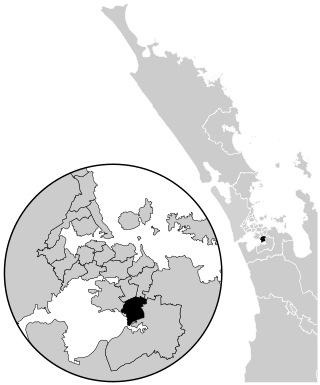
Manurewa is a New Zealand parliamentary electorate in southern Auckland. A very safe Labour seat, the seat was created in 1963 and has returned a National MP only once, in 1975. Arena Williams has represented the electorate since the 2020 election.

Papakura is an electorate for the New Zealand House of Representatives, based in the south Auckland town of Papakura. Historically, the name refers to an electorate that existed between 1978 and 1996, which with the advent of Mixed Member Proportional voting and resulting reduction in the number of constituencies was folded into a new Hunua seat. In 2002 Hunua was modified, pulled northwards and renamed Clevedon.
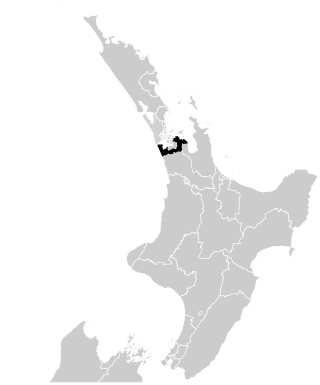
The Hunua electorate existed three times for the New Zealand House of Representatives beginning in 1978, based at the south end of the Auckland urban area, and named for the Hunua Ranges. It covered different geographical areas over those periods. The electorate was last represented by Andrew Bayly of the National Party before its dissolution in 2020.
Matamata was a New Zealand parliamentary electorate in the Waikato, from 1978 to 1996. It was a rural and safe National electorate, held by Jack Luxton from 1978 to 1987, and then by his son John Luxton from 1987 to 1996.
Hauraki is a former New Zealand parliamentary electorate, from 1928 to 1987 and 1993 to 1996. In the 1987 general election it was renamed Coromandel, the name that had been used from 1972 to 1981. In 1993 it reverted to Hauraki, but became Coromandel again for the first MMP election in 1996.

Pencarrow is a former Parliamentary electorate in the lower Hutt Valley of New Zealand, from 1978 to 1996.
Kaimai is a former New Zealand parliamentary electorate, from 1978 to 1996. In 1996 the MP Robert Anderson was selected for the new seat of Coromandel, but retired due to illness, and was replaced by Murray McLean, who won the new seat.
Otahuhu is a former New Zealand parliamentary electorate in the southern suburbs of the city of Auckland, from 1938 to 1963, and then from 1972 to 1984.
Rangiriri was a rural New Zealand parliamentary electorate in the Waikato Region from 1978 to 1984.
Kapiti was a New Zealand parliamentary electorate, from 1972 to 1996. A bellwether electorate, it frequently changed between National and Labour.
Horowhenua was a New Zealand parliamentary electorate, from 1978 to 1996.
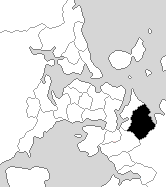
Howick is a former New Zealand parliamentary electorate, which existed for one parliamentary term from 1993 to 1996, and was held by Trevor Rogers. In 1995, Rogers defected from National to the Right of Centre party.
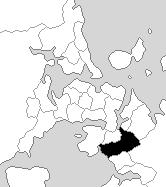
Otara was a New Zealand parliamentary electorate in Auckland, from 1984 to 1996. It existed for four parliamentary terms and was represented by three members of parliament, two from Labour and one from National.

Eastern Hutt is a former New Zealand parliamentary electorate from 1978 to 1996. It was represented by two Labour MPs.
Tarawera is a former New Zealand parliamentary electorate, from 1978 to 1996. It was represented by two members of the National Party.
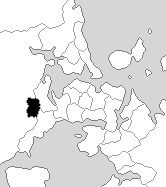
Henderson is a former New Zealand parliamentary electorate, from 1969 to 1978 and then from 1993 to 1996.
Yaldhurst is a former New Zealand parliamentary electorate, near the city of Christchurch. The electorate was to the southwest of Christchurch, and was suburban and semi-rural.